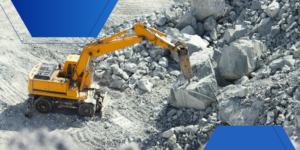
A recently launched tool that bills itself as “Google Maps for finding construction aggregates” aims to level the playing field for finding, purchasing, and delivering construction aggregates across the country.
AggMaps, founded by industry veteran Eric Dance, aims to help contractors easily find construction aggregates — and pricing data — at quarries, pits, dumps, and landfills across the United States.
The tool could usher in a new era of price transparency and comparison shopping in the construction industry: Because contractors can see an array of material suppliers and full price sheets on AggMaps, they are able to quickly compare prices when purchasing dirt, rock, sand, soil, or gravel for a job.
Economic research has shown that price comparison tools tend to decrease prices because businesses are forced to compete for customers. On the other hand, these tools often involve commission costs for suppliers, who sometimes pass the added costs directly on to consumers.
How does AggMaps work?
AggMaps, launched in September 2022, includes location data for more than 25,000 quarries, pits, and landfills across the United States.
On the website, users can enter a job address, then search for aggregate suppliers within a certain radius. AggMaps displays colored pins that distinguish locations based on the type of materials available. Additionally, users who sign up for a free account can request materials or offer excess dirt from a jobsite.
With the goal of creating a more efficient market for aggregates, Dance sourced publicly available data to map producers across the United States. After identifying thousands of locations, he worked with a software developer over the past year to develop AggMaps.
In addition to location data, AggMaps displays regularly updated price sheets for nearly 1,000 suppliers, which introduces a rare form of price transparency in a sector known for paper checks and closely guarded trade secrets. Typically, contractors have to reach out to material suppliers to request pricing information, which is generally not published online.
Dance notes that the tool began as a passion project after he found that existing tools had sparse location data for most quarries, pits, and landfills.
“At the beginning of the pandemic, our customer base was expanding beyond our normal area in Dallas-Ft. Worth,” said Dance. “They were looking for trucking bids in Waco, San Antonio, and even further out. When I turned to Google Maps to find dirt, rock, sand, and gravel in these new areas, the smaller operations are rarely listed.”
While Google Maps generally contains data about large aggregate producers like Vulcan and Martin Marietta, contractors looking for smaller producers have relatively few options for finding up-to-date location data.
“Once you exhaust Google, you tend to turn to local truckers, but they’re often unwilling to disclose the locations they purchase aggregates from,” said Dance. “They view those locations as trade secrets, especially in haul off scenarios. But I always want to know where my materials are coming from and where they’re going.”
The current market is an example of information asymmetry, an economic situation in which one party has more — or better — information than another. In this case, contractors who purchase aggregates could overpay simply because they do not know the source of the materials.
“Trucking should be predominantly based on distance traveled,” said Dance. “But there can be a lot of obscurity if you don’t know where it’s coming from. Is it equitable to pay the equivalent of a 30-mile haul rate when the material is really traveling five miles? The current situation with transporting aggregates creates a lot of inefficiencies in the market. It’s an unnecessarily time-consuming process.”
The lack of easily available information can be frustrating for contractors who need materials — especially in the currently constrained market where budgets are stretched thin to accommodate rising material costs.
“Anyone can call up a supplier and try to get a price list,” said Dance. “It’s a coin toss if they’ll actually send it to you—you may get something over the phone, but it’s harder to get it in writing. I’m an expert in finding these materials, and I still find it difficult to get this information from suppliers I don’t have an existing relationship with. I wanted to remove some of the bottlenecks and transfer the information more easily. There shouldn’t be so many barriers to knowing where these materials are and what they cost.”
The pros and cons of price aggregators in construction
Dance contends that the material suppliers would benefit financially from price transparency, since it could allow their staff to concentrate on larger deals instead of low-value activities like emailing price sheets.
Economic research tends to support a different conclusion: When consumers can find pricing information more easily, prices and profits decrease for producers and suppliers.
The economist Peter Diamond noted that higher search costs — such as the time a contractor would have to spend calling multiple suppliers — reduce competition and lead to higher prices. In other words, the current market for aggregates and other building materials benefits producers rather than consumers, who have few options for quickly comparing prices.
Over time, AggMaps could function as an effective price comparison tool — similar to websites that consumers use to compare costs for flights, hotels, or rental cars. With more easily available information, contractors could quickly compare prices among many options. Economic research suggests that these tools ultimately have the effect of driving down prices, since producers are incentivized to compete for business.
However, price comparison tools do not always lead to lower prices. Because comparison websites frequently charge a commission on referral sales, producers may ultimately raise prices to compensate for the commission. On the other hand, it’s possible that contractors could pay less while suppliers reduce their profit margins to stay competitive.
Tools like AggMaps — or others that may emerge for materials beyond aggregates — have the potential to create downward pressure on material prices that have risen dramatically in the past two years.